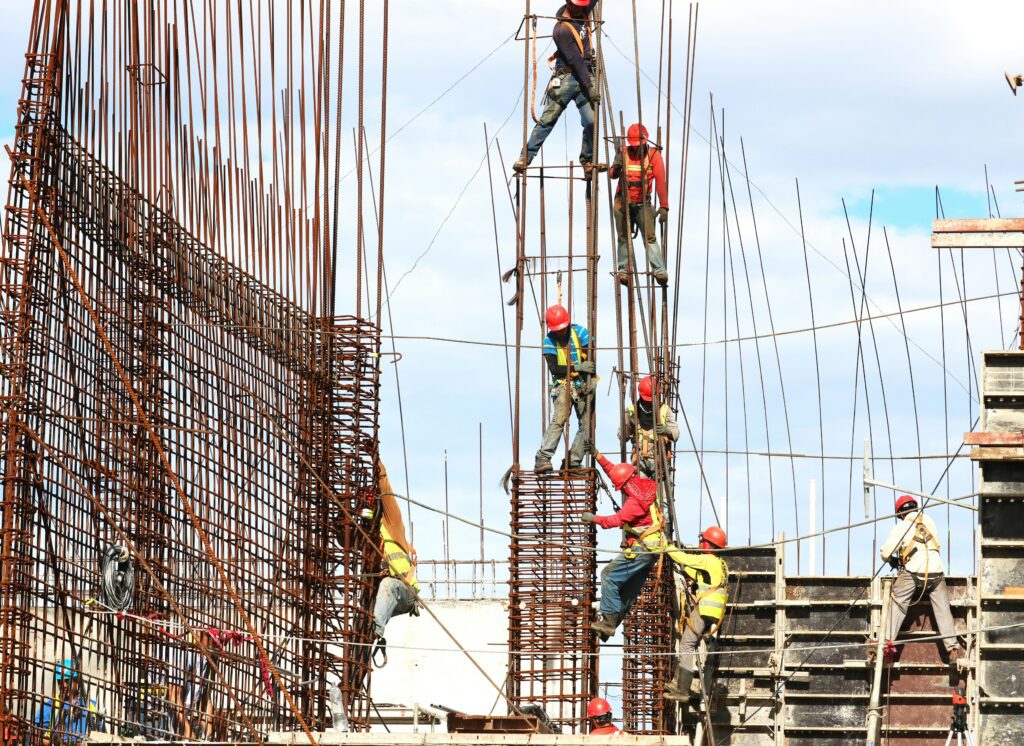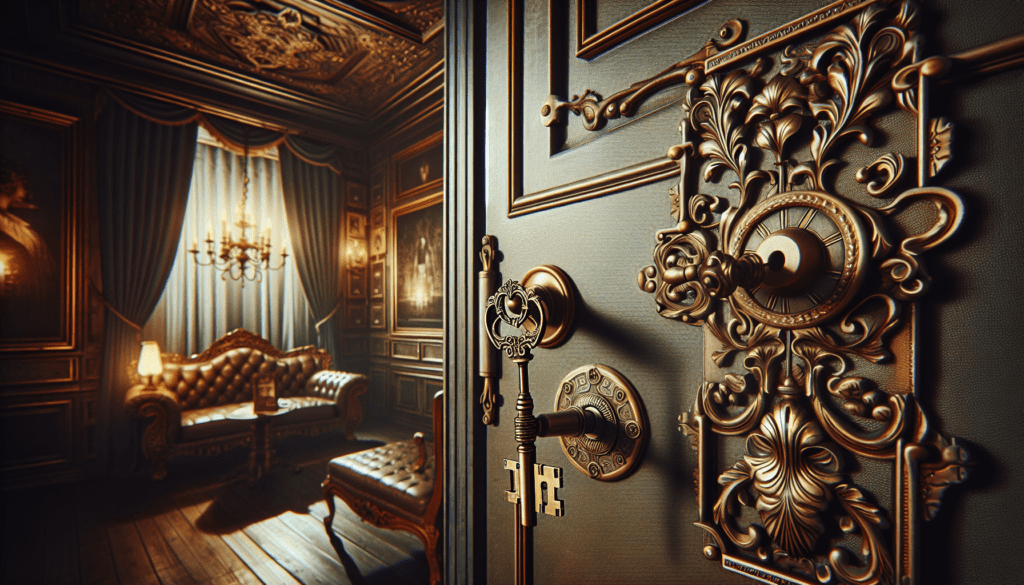Have you ever wondered how long it takes to build an escape room? The answer may surprise you. Building an escape room involves a meticulous process that requires careful planning, designing, and constructing. From brainstorming the theme and storyline to building intricate puzzles and setting up the room, creating an escape room is no small task. In this article, we will explore the various steps involved in building an escape room and give you an insight into the time it takes to bring this immersive experience to life. So, if you’re curious about the behind-the-scenes of escape room creation, keep reading to find out more!
Design and Conceptualization
Brainstorming and Research
In the initial phase of designing an escape room, you’ll embark on a journey of brainstorming ideas and conducting thorough research. You’ll explore various themes and concepts to find the one that resonates with your audience and fits your intended experience. This is a collaborative process where you can involve your team members or seek inspiration from online resources and existing escape rooms. Taking the time to research market trends, player preferences, and the competition will help you create a unique and captivating experience.
Theme and Storyline Development
Once you have gathered ample inspiration and ideas, it’s time to narrow down your choices and develop a cohesive theme and storyline for your escape room. The theme will dictate the overall atmosphere and aesthetics, while the storyline will provide players with a sense of purpose and immersion. You can draw inspiration from movies, books, historical events, or even your own imagination to create a captivating narrative. Remember to keep your target audience in mind and ensure that the theme and storyline align with their interests.
Room Layout and Puzzle Design
With the theme and storyline in place, it’s time to dive into the intricacies of designing the room layout and puzzles. The room layout determines how the space will be utilized and how players will navigate through it. You’ll need to consider factors such as size, flow, and accessibility to ensure a seamless and engaging experience. When it comes to puzzle design, creativity is key. Think outside the box and craft puzzles that are challenging yet solvable. Consider incorporating a variety of puzzle types, such as logic puzzles, riddles, hidden objects, and physical tasks, to cater to different players’ interests and skills.
Deciding on technology and equipment
In the digital age, technology plays a crucial role in creating an immersive escape room experience. From electronic locks and sensors to audiovisual effects, there’s a wide range of technological advancements you can integrate into your design. During this phase, you’ll need to decide on the specific technology and equipment you’ll use, ensuring they align with your theme and enhance the gameplay. Consider factors like user-friendliness, reliability, and maintenance requirements when making these decisions. Collaborating with experts in electronics and technology can help you make informed choices and bring your vision to life.
Construction and Set Design
Structural Modifications
Once the design phase is complete, it’s time to bring your escape room to life through construction and set design. Depending on the size and condition of your chosen space, structural modifications may be necessary to create the desired atmosphere and functionality. This could involve building walls, installing doors, or even creating secret passages. Working with professionals such as architects or contractors can streamline this process and ensure the safety and compliance of the modifications.
Creating Props and Decorations
The props and decorations in your escape room are vital in immersing players in the theme and storyline. This is the stage where you’ll craft or acquire the necessary props and decor elements to enhance the overall experience. Whether it’s antique furniture, intricate wall art, or detailed room decorations, every item should contribute to the immersive atmosphere and be aligned with the chosen theme. Pay attention to details, as even the smallest props can make a significant impact on players’ engagement and enjoyment.
Installation of Sound and Lighting Systems
To create an immersive and dynamic environment, the installation of sound and lighting systems is crucial. Sound effects, background music, and voiceovers can enhance the realism and suspense of the game, while well-placed lighting can create ambiance and highlight important elements. Collaborating with professionals in audiovisual technology can help ensure the seamless integration of sound and lighting systems into your escape room. Proper placement and synchronization of these elements will heighten players’ immersion and contribute to a memorable experience.

Puzzle and Game Creation
Mapping out Clues and Progression
The heart of an escape room lies in its puzzles and progression. Mapping out clues and the overall game flow is a critical step in creating a challenging yet enjoyable experience for players. Each puzzle should lead logically to the next, with a clear sense of progression and accomplishment. Consider the difficulty level, ensuring that players are appropriately challenged without becoming frustrated. The clues should align with the storyline and theme, reinforcing the immersion and narrative. Creating a visual storyboard or flowchart can aid in structuring the game and ensuring a cohesive experience.
Building and Testing Puzzles
With the puzzle design mapped out, it’s time to bring them to life by building and testing each challenge. Attention to detail is crucial during this phase, as any flaws or inconsistencies in the puzzles could negatively impact players’ experience. Test each puzzle thoroughly, making adjustments and tweaks as necessary. Ensure that puzzles are solvable, clear in their instructions, and provide players with a sense of accomplishment upon completion. Playtesting with a diverse group of individuals can provide valuable feedback and help refine the puzzles further.
Reviewing and Tweaking Game Flow
As you build and test each puzzle, it’s essential to continuously review and tweak the overall game flow. Pay attention to the pacing, ensuring that players remain engaged and immersed throughout the experience. Keep track of the time taken to solve each puzzle, as this will help you fine-tune the difficulty and timing. Seek feedback from playtesters and listen to their suggestions, as they can offer valuable insights into potential improvements. Emphasize the importance of player experience and adjust the game flow accordingly to create a seamless and enjoyable journey.
Electronics and Technology
Selecting and Installing Electronic Components
The integration of electronics and technology in your escape room can elevate the gameplay and provide a unique experience for players. During this phase, you’ll need to select the appropriate electronic components that align with your theme and complement the puzzles. This could include electronic locks, sensors, timers, or even interactive displays. The reliability, user-friendliness, and compatibility of these components should be carefully considered. Once selected, the installation process involves ensuring proper fit, wiring, and synchronization with the overall game flow.
Wiring and Programming Electronics
Wiring and programming electronics is a crucial aspect of creating a smoothly functioning escape room. Proper wiring ensures that all electronic components are interconnected and respond accurately to player actions. It is essential to follow electrical safety guidelines and engage the expertise of professionals if necessary. Programming the electronics involves writing code or configuring software to control and synchronize the various elements in the room. This ensures that puzzles, locks, and other electronic components work seamlessly together, enhancing the overall gameplay experience.
Integrating Technology with Puzzles and Game Flow
The successful integration of technology with puzzles and game flow is essential to creating a cohesive and immersive escape room experience. Each electronic component should serve a purpose and contribute to the overall storyline and gameplay. Whether it’s using sensors to trigger events or electronic locks to unlock new areas, technology should seamlessly blend with the puzzles, enhancing the challenge and interactivity. Thorough testing and coordination of these elements will ensure a smooth and engaging experience for players.

Safety and Security
Ensuring Emergency Exits and Procedures
Safety should always be a top priority when designing and operating an escape room. Ensuring the presence of clearly marked emergency exits, well-lit pathways, and visible signage is crucial. Perform regular inspections to make sure that these exits are easily accessible and free from obstruction. Establish emergency procedures and train staff on how to handle emergencies effectively. Prioritize the safety of both players and staff by having comprehensive protocols in place and conducting regular drills.
Fire and Electrical Safety Measures
Given the presence of electronic equipment and props, fire and electrical safety measures are of utmost importance. Install fire alarm systems, smoke detectors, and fire extinguishers throughout the escape room. Regularly inspect and maintain electrical wiring to minimize the risk of electrical fires. Implement policies and procedures to ensure safe handling of electrical equipment and prop construction materials. Conduct routine safety checks to identify potential hazards and address them promptly.
Securing Props and Electronics
To prevent theft or damage, it’s essential to secure props and electronics within the escape room. Use appropriate locks, security cables, or cases to safeguard valuable items. This includes securing electronic components, such as control panels or computers, to ensure they remain intact and operational. Regular inspections can help identify any signs of tampering or wear and tear, allowing for timely repairs or replacements. By prioritizing security measures, you can maintain the integrity of your escape room and provide a worry-free experience for players.
Testing and Revisions
Run-Throughs and Playtesting
Before officially opening your escape room to the public, it’s crucial to conduct extensive run-throughs and playtesting. This involves inviting a diverse group of individuals to experience the room and provide feedback. Observing players’ behaviors, reactions, and overall engagement can provide valuable insights into the strengths and weaknesses of your design. Take note of any areas where players encounter difficulties or confusion, as these are opportunities for improvement. The feedback gathered during this phase will guide you in making necessary adjustments to enhance the overall gameplay experience.
Making Necessary Adjustments
Based on the feedback received during playtesting, it’s essential to make necessary adjustments to address any identified issues or areas of improvement. This could involve redesigning puzzles, clarifying instructions, or rearranging props for better flow. Pay attention to the difficulty level, ensuring that it aligns with your target audience’s expectations and capabilities. Continuously iterate and refine your escape room design until you are confident that it provides an engaging and rewarding experience for all players.
Fine-Tuning Difficulty and Timing
One of the critical aspects of designing an escape room is striking the right balance between difficulty and timing. While you want to challenge players and keep them engaged, it’s crucial to avoid frustration or boredom. Fine-tuning the difficulty level entails adjusting puzzle complexity, the number of clues provided, and the overall progression. Timing is also vital to ensure that players have enough time to complete the room but are not rushed. By carefully monitoring and iterating on these elements, you can create a customized experience that caters to both novice and experienced players.

Installation and Set-Up
Transporting and Assembling Set Pieces
Once all the elements of your escape room are ready, it’s time to transport and assemble them in the designated physical space. This requires careful planning and coordination, ensuring that all set pieces, props, decoration, and electronics are safely transported and installed. Consider factors like space constraints, accessibility, and the order in which items need to be assembled. Collaborate with a team of reliable individuals to streamline this process and ensure a smooth transition from the design phase to the physical installation.
Setting Up Props and Decorations
Setting up props and decorations is an exciting and crucial part of the installation process. This is where you bring your vision to life and create the immersive atmosphere that will captivate players. Follow your design plan and arrange props and decorations in a way that enhances the theme and supports the narrative. Pay attention to small details, ensuring that everything is in its right place, aligned with the room layout and storyline. Regularly review the overall appearance and make any necessary adjustments to achieve the desired aesthetics.
Installing Electronics and Sound Systems
The final step in the installation process is integrating and installing the electronic components, sound systems, and lighting. This requires meticulous planning to ensure proper wiring, synchronization, and functionality. Follow the manufacturer’s instructions for each electronic component, paying attention to safety guidelines. Collaborate with professionals or individuals with expertise in audiovisual installation to ensure optimal placement and performance. Thoroughly test each element to ensure seamless operation and an immersive experience for players.
Training and Familiarization
Training Staff on Game Design and Mechanics
Before opening your escape room, it’s crucial to train your staff on the game design and mechanics. This includes providing them with a thorough understanding of the theme, storyline, and overall gameplay. Train them on how to facilitate the game, including monitoring players, providing hints when necessary, and ensuring a safe and enjoyable experience. Familiarize them with the player journey, emphasizing the importance of providing excellent customer service while maintaining the integrity of the game. Regular training sessions and refresher courses will help your staff deliver a consistent and immersive escape room experience.
Familiarizing Staff with Puzzles and Clues
To effectively assist players, your staff must be intimately familiar with the puzzles and clues within the escape room. They should understand the logic behind each puzzle, know the solutions, and be able to provide hints or guidance when players struggle. Encourage your staff to continuously engage with the puzzles themselves, gaining firsthand experience and insight into the challenges players may encounter. Regular communication and brainstorming sessions among staff members can help them share strategies, tips, and tricks for navigating the escape room successfully.
Running Mock Games with Staff
To ensure that your staff is well-prepared for the official opening of the escape room, running mock games with them is highly beneficial. These simulated gameplay sessions allow staff to practice their roles and responsibilities while experiencing the escape room as players themselves. Encourage them to provide feedback on any areas that may need improvement or clarification. By running mock games, you can fine-tune your staff’s performance, identify any potential issues, and ensure they are confident and capable of delivering an exceptional experience to players.

Marketing and Promotion
Developing a Marketing Strategy
Marketing plays a crucial role in attracting players to your escape room. Developing a comprehensive marketing strategy is essential for reaching your target audience and generating excitement about your offering. Identify your unique selling points, whether it’s a distinctive theme, innovative puzzles, or immersive storytelling, and highlight them in your marketing materials. Determine the most effective channels to reach your audience, whether it’s through social media, online advertisements, or collaborations with local businesses. Set clear goals and metrics to measure the success of your marketing efforts.
Creating Promotional Materials
To effectively communicate the essence and excitement of your escape room, creating compelling promotional materials is essential. This includes designing eye-catching logos, brochures, flyers, and posters that reflect the theme and aesthetics of your escape room. Use vivid imagery and engaging copy to entice potential players and convey the unique experience they can expect. Incorporate positive testimonials or reviews from playtesters to build trust and credibility. Leverage graphic design and copywriting professionals to create promotional materials that capture the essence of your escape room and stand out from the competition.
Online and Offline Marketing Campaigns
To reach a wide audience and maximize your exposure, both online and offline marketing campaigns should be implemented. Online campaigns can include social media posts, targeted advertisements on relevant websites, and collaborations with influential bloggers or vloggers in the gaming community. Offline campaigns may involve distributing flyers in local establishments or hosting promotional events at related venues. Explore partnerships with local tourism boards, hotels, or corporate event planners to expand your reach. Regularly analyze the effectiveness of these campaigns, making adjustments as necessary to optimize results.
Final Inspections and Opening
Passing Safety Inspections
Before officially opening your escape room to the public, it’s crucial to undergo and pass thorough safety inspections. Engage with local authorities and obtain the necessary permits and licenses to ensure compliance with safety regulations. These inspections will encompass areas such as fire safety, electrical wiring, accessibility, and overall structural integrity. Ensure that emergency exits, signage, and safety equipment are up to code and clearly marked. Collaborate with professionals or safety consultants to address any identified issues and make the necessary improvements before opening day.
Finalizing Licensing and Permits
In addition to safety inspections, finalizing all necessary licenses and permits is critical to ensure the legality and smooth operation of your escape room. Research local regulations, zoning ordinances, and business licensing requirements to ensure compliance. Acquire the appropriate licenses and permits, whether they are for entertainment, gaming, or any other relevant categories. Consult with legal professionals or business advisors to navigate the necessary paperwork and ensure that you are operating within the parameters of the law.
Opening Day Preparations
Opening day is an exciting and crucial moment for your escape room. To create a seamless and memorable experience for players, thorough preparations are necessary. Ensure that all props, puzzles, and electronics are in working order and thoroughly tested. Train your staff to handle various scenarios and provide exceptional customer service. Implement a reservations or ticketing system to manage the flow of players and prevent overbooking. Conduct a final walkthrough of the escape room, double-checking that all safety measures are in place. Communicate the opening date and details through your marketing channels, building anticipation among potential players.
In conclusion, building an escape room is a comprehensive process that requires careful planning, creativity, and attention to detail. From the initial brainstorming and research to the final preparations and opening day, each phase contributes to creating a captivating and immersive experience for players. By following the outlined steps, collaborating with professionals when necessary, and continuously refining and improving your design, you can create an escape room that delights and challenges players, leaving them eagerly wanting more. So, grab your blueprint and let your imagination run wild as you embark on an unforgettable adventure in escape room design!

